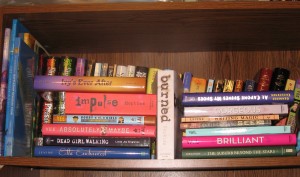Today’s guest blogger is yet another wonderful writer friend of mine I met at the Eastern PA SCBWI Poconos conference. (I’ve seriously met so many amazing writers there, and I haven’t even been for several years!) Join Linda Budzinski as she celebrates the release of her new YA contemporary EM & EM. Be sure to enter the giveaway!
Use Your Words
by Linda Budzinski
Dear Readers:
As writers and readers, we appreciate the immense power of words. They’re like a secret weapon—one we all possess and can use for good or for evil.
In EM & EM, Emily Slovkowski finds herself the victim of a single word: Slutkowski. After a GIF of her behaving badly at a party makes the rounds, her classmates taunt her with that word to the point that she allows it to define her.
Fortunately, in her new life under Witness Protection as Ember O’Malley, she makes friends who have new words for her—smart, funny, brave—words that allow her to see herself in a new light.
The words we use, the labels we apply to one another, matter.
My senior year in high school, I applied for a grant for college. I had to fill out an application, write an essay, and do an in-person interview. Partway through the interview, the very intimidating gentleman who was assessing my grant-worthiness pulled out my essay and said, “Your command of the English language is remarkable.”
I don’t remember what my essay was about, nor do I remember anything else about that interview, but I remember that moment as clearly as if it were yesterday. I have relived it in my mind many, many times since. Why? I’m not sure. I only know that it made a huge impression and is a big part of the reason I’m a writer today. I am sure that gentleman, if he is still alive, would not remember me. He would not remember his remark. But his words made a difference.
We hear a lot these days about the prevalence of bullying and the destructive power of cruel words. The good new is, encouraging words possess equal, and maybe even stronger, powers.
How are you using your words?
The last thing sixteen-year-old Emily Slovkowski wants is to move away from her home at the Jersey shore, gorgeous surfer boyfriend Zach, and her entire identity. But that’s kind of how Witness Protection works, and Em must prepare herself for an epic do-over as she starts a new life in the Midwest.
Even as she pines for sandy beaches and the night life of the shore, the newly-named Ember O’Malley finds herself making new friends, taking photos for the high school newspaper, and thinking an awful lot about the paper’s editor, an oddly cute cowboy named Charles.
When Em stumbles upon a shady beneath-the-bleachers exchange between one of the school’s football coaches and a student, she refuses to get involved. The last thing she needs is to be witness to another crime or call attention to herself. Besides, she finally has some real friends – well, real except for the fact that they don’t know a single thing about her – and she prefers to keep it that way until the trial.
But as her day in court approaches, Em begins piecing together what she saw that day beneath the bleachers. And, as her own past secrets start to catch up with her, Em needs to figure out who she really is – Em or Em.
Link to Goodreads:
https://www.goodreads.com/book/show/24980193-em-and-em
Purchase Links:
BAM | Chapters | Amazon | B&N | TBD |
Linda Acorn Budzinski decided in the second grade that she wanted to be a “Paperback Writer,” just like in the Beatles song. She majored in journalism in college and now works in marketing and communications. She spent 18 years at a trade association in the funeral service industry, where she discovered that funeral directors are some of the bravest and most compassionate people on earth. Linda lives in Northern Virginia with her husband, Joe, and their chihuahua, Demitria. She has two step-daughters, Eris and Sarah. THE FUNERAL SINGER is her debut novel. She is represented by Andrea Somberg of Harvey Klinger Inc.
THE FUNERAL SINGER is Linda Budzinski’s first novel.
Connect with the Author: Website | Twitter | Facebook | Goodreads
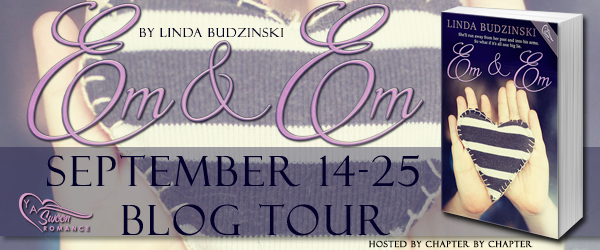
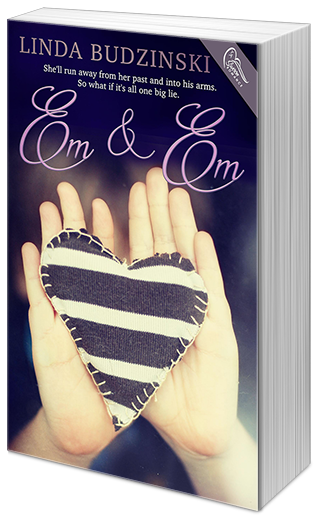
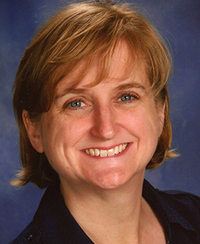
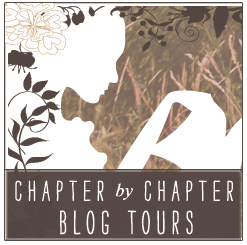

 Can a Reluctant Reader be a Decent Writer?
Can a Reluctant Reader be a Decent Writer?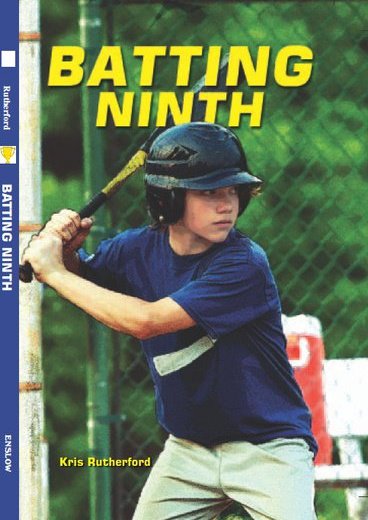 About the Author:
About the Author: